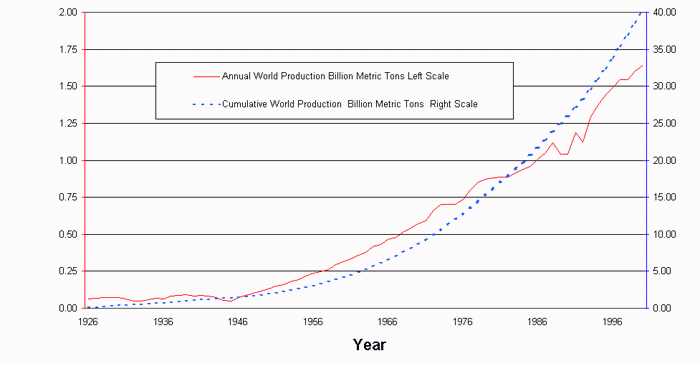
Cement and global warming

• Making cement results in high levels of CO2 output.
• Cement production is the third ranking producer of anthropogenic (man-made) CO2 in the world after transport and energy generation.
• 4 - 5% of the worldwide total of CO2 emissions is caused by cement production.
• CO2 is produced at two points during cement production :
- the first is as a byproduct of burning of fossil fuels, primarily coal, to generate the heat necessary to drive the cement-making process
- the second from the thermal decomposition of calcium carbonate in the process of producing cement clinker.
CaCO3 (limestone) + heat -> CaO (lime) + CO2
• Production of one tonne of cement results in 780 kg of CO2
• Of the total CO2 output, 30% derives from the use of energy and 70% results from decarbonation
• Important to realise is that although 5% of the worldwide generation of CO2 is due to cement production, that level of output also reflects the unique and universal importance of concrete throughout the construction industry.
World Cement Production 1926 -2000


Concrete raw materials extraction and processing

- Landscape degradation (see examples)
- Dust and noise
- Visual impact on some areas of outstanding natural beauty
- Proximity to population centres
- Loss of agricultural land
- Use of potable water to wash aggregates, dust suppression and in the manufacturing process
Transport

- Energy consumption
- Vehicle pollution
- Noise

More about Concrete:
- Cement: Materials and manufacturing process
- Aggregates for Concrete
- Concrete and Sustainability
- UK Concrete Industry: Sustainable Construction Strategy
- Cement Substitutes
- Exploiting thermal mass
- Specifying for Sustainability
- Specifying Recycled and secondary aggregates